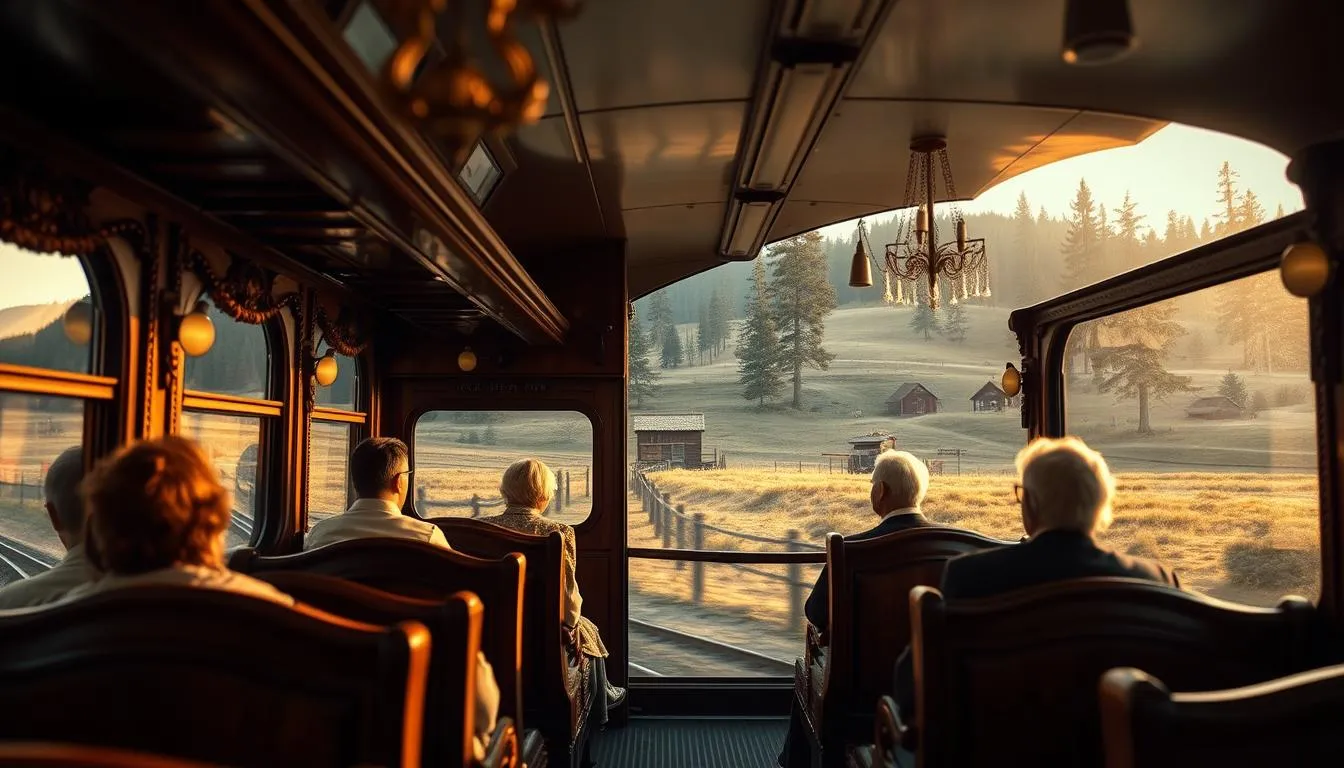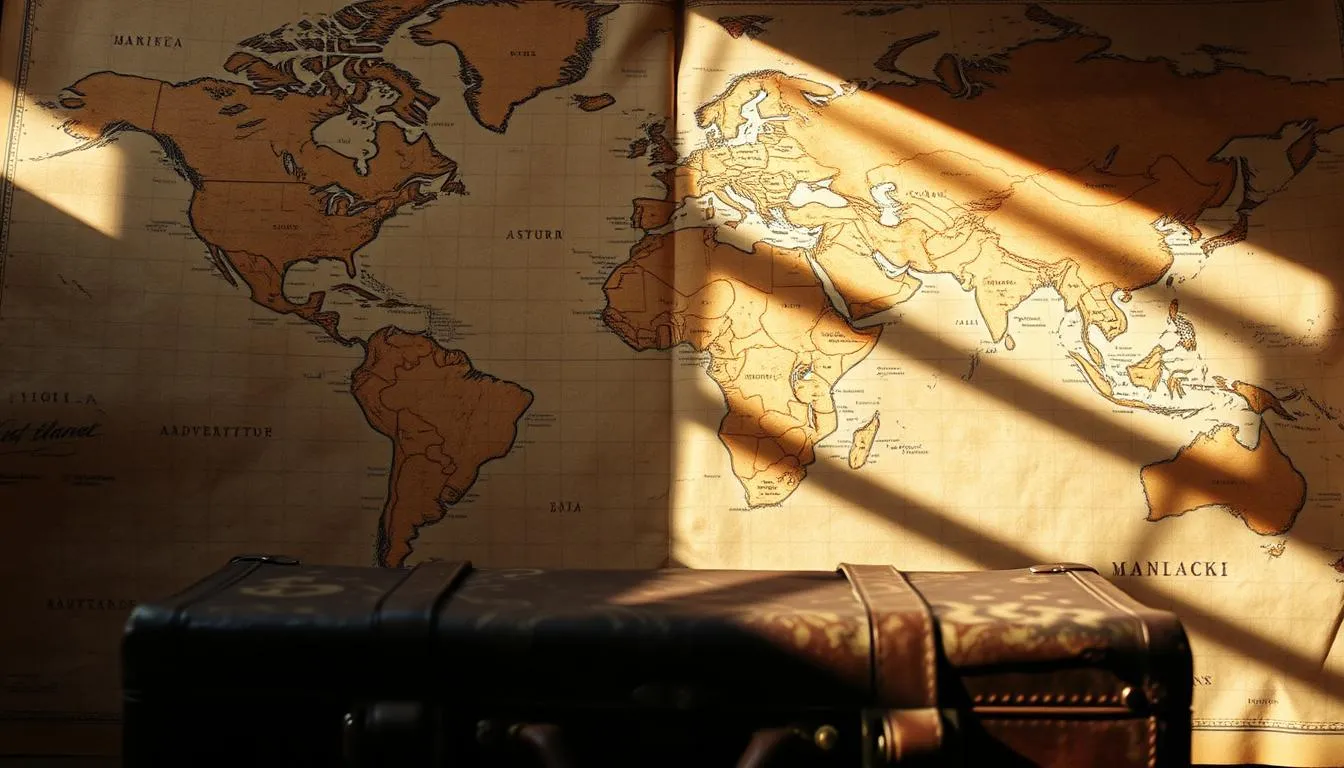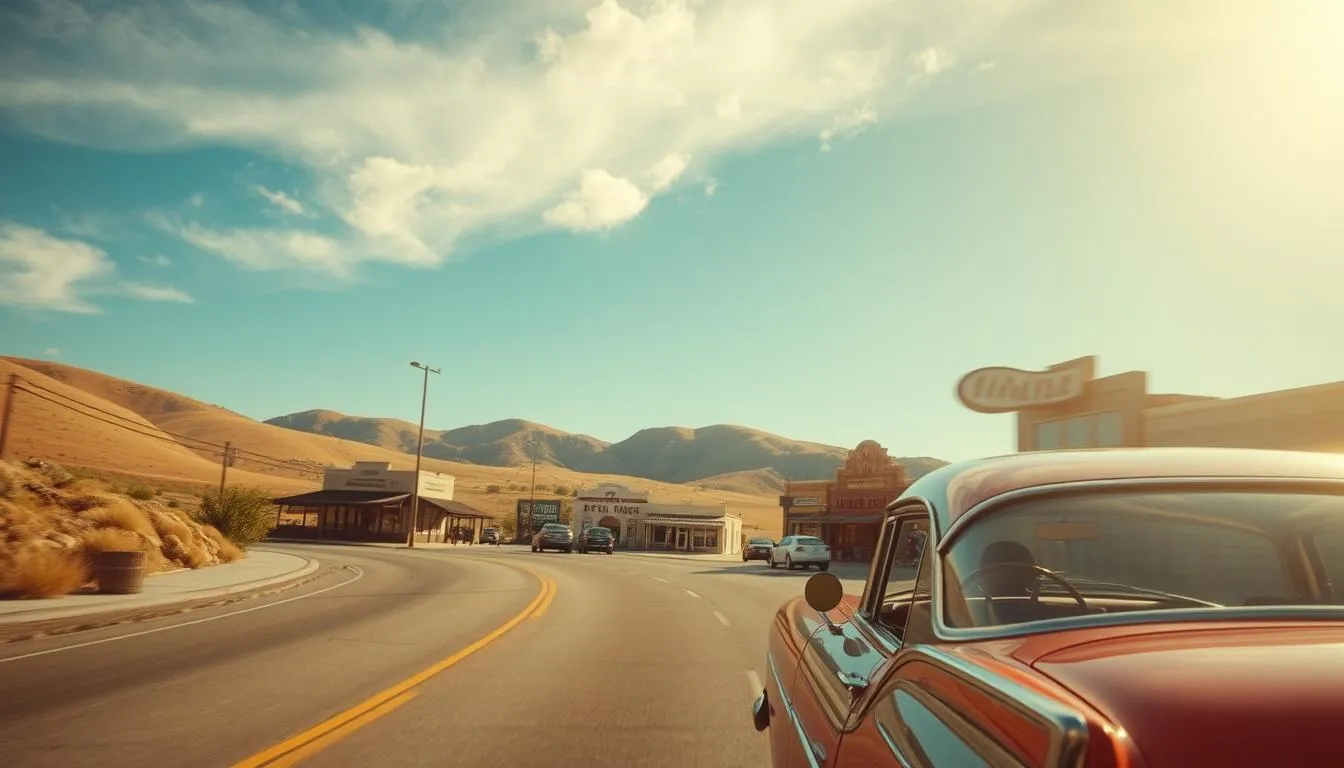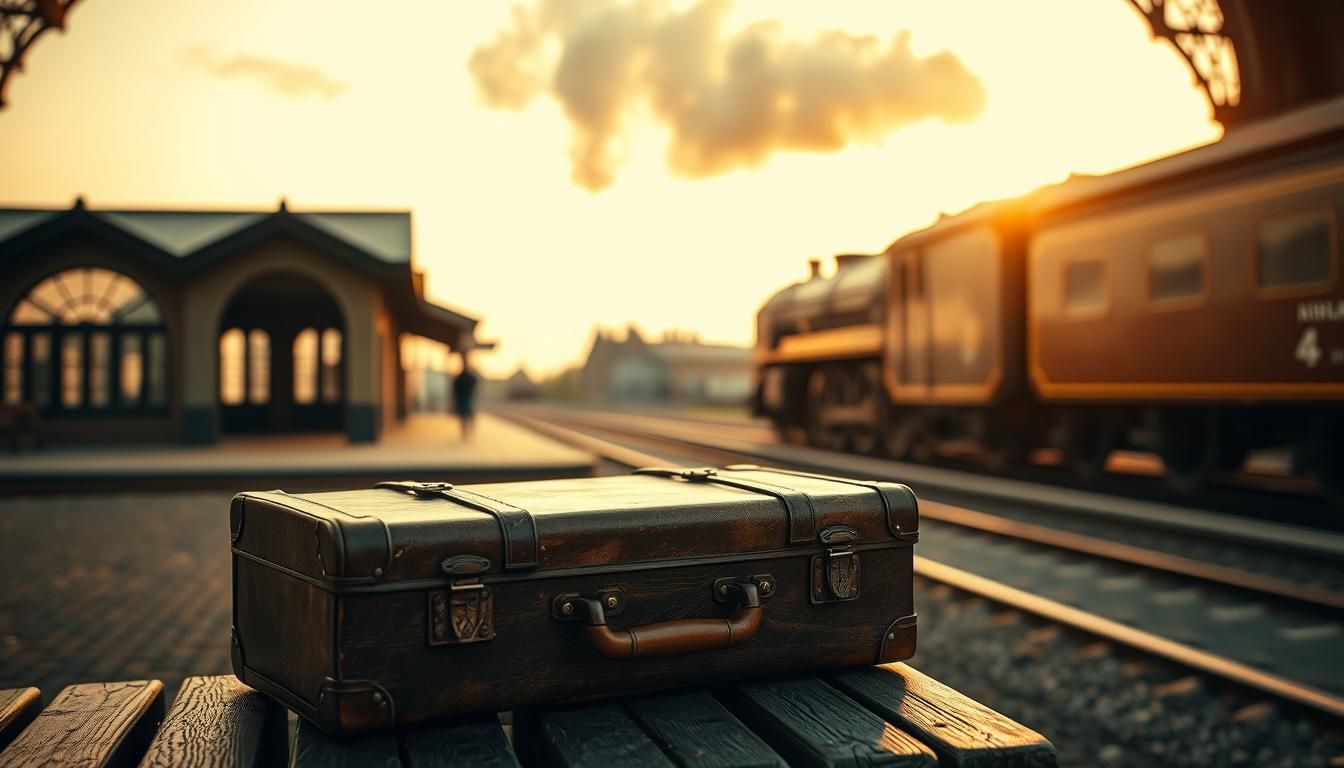Surprising fact: Hilton’s 2025 Trends Report surveyed 13,000 adults across 13 countries plus 2,000 more in the UK, and one clear pattern rose up — memory-driven choices now steer where people go and what they seek on the road.
Nostalgications are the feel-good point where past memories inspire present-day travel decisions. This trend turns childhood favorites, comfort foods, and familiar hotel touches into purposeful travel decisions that shape life moments.
The data-backed report shows families revisiting beloved spots, kids guiding itineraries, and brands answering with themed rooms and retro amenities. These memory-charged experiences reconnect people and create a sense of home even when miles away.
In this friendly trend analysis, we’ll translate numbers into practical takeaways for U.S. readers. Expect examples, brand insights, and how-to ideas that explain why nostalgia is not just sentimental — it’s a modern filter for choosing how to travel and feel more connected.
Key Takeaways
- Hilton’s report shows large-scale evidence that memories shape travel behavior.
- Nostalgications blend nostalgia and travel to create meaningful experiences.
- Families and kids are steering more memory-focused itineraries.
- Hotels scale nostalgia through themed suites and comfort-driven amenities.
- Nostalgia ties into broader trends like better sleep, spontaneity, and loyalty perks.
- Readers will get data-backed tips to turn memories into their next trip plan.
Defining the nostalgication trend: where nostalgia meets modern travel
Today’s vacation picks often start with a memory — a beach, a diner, or a childhood street. That impulse is at the heart of a new travel trend called nostalgication, where past moments guide present plans.
From “nostalgia” to a modern buzzword
The word nostalgia has roots in New Latin and Greek: nóstos (return) + -algia (pain). Physician Johannes Hofer coined it in 1688. Over time, media and culture softened the term from clinical longing to warm recollection.
How memories, places, and feelings shape trips
Nostalgication turns private memories into public travel choices. Emotionally charged places — childhood beaches, hometown parks, an old cafe — become anchors for new trips.
 The Hilton 2025 trends report shows families and children often choose known spots to reinforce bonds. Social media then amplifies those stories, inspiring others to copy the path.
The Hilton 2025 trends report shows families and children often choose known spots to reinforce bonds. Social media then amplifies those stories, inspiring others to copy the path.
| Concept | Definition | Example |
|---|---|---|
| nostalgia | a feeling of longing for the past | missing a summer at the lake |
| nostalgication | using memories to plan travel | booking the same seaside town with kids |
| modern effect | memories meet practical planning | choosing familiar neighborhoods for ease |
Why it matters: This approach gives travelers emotional payoff and simple logistics. It fits into broader travel trends without needing a new playbook — just a map back to what feels like home.
Nostalgications by the numbers: what the latest trends report reveals
Hilton’s 2025 trends report offers a clear, data-driven snapshot of how memories now affect where people plan to travel next year. The numbers show this is a mainstream shift, not a niche idea.
Inside Hilton’s 2025 Trends Report: methodology and global scope
The survey polled 13,000 adults across 13 countries and added a deep dive of 2,000 UK travelers. That wide sample makes the findings useful for planning family trips and hotel strategy.
Revisiting childhood destinations and passing down shared experiences
Nearly half of UK respondents return to childhood destinations with their children. Specifically, 47% go back to childhood holiday spots and 51% take kids to places they once dreamed about.
Family influence, kid-led itineraries, and the rise of the “kidcation”
Parents are building trips around children: 60% pick holidays for kids’ needs, 58% plan activities kids love, and 52% let kids pick restaurants. These choices turn memories into live experiences.
Sleep, comfort, and the “Great Sleep Split” shaping room choices
Sleep matters: 59% sleep better alone, 33% prefer separate beds, 19% book separate beds, and 11% book separate rooms. Better sleep and comfort now shape which hotel and rooms families choose.

| Metric | UK % | Why it matters |
|---|---|---|
| Return to childhood spots | 47% | Turns memories into repeatable family experiences |
| Take kids to dreamed places | 51% | Creates shared emotional destinations |
| Pick holiday for kids’ needs | 60% | Drives kidcation planning and activity choices |
| Prefer separate beds | 33% | Links rooms choice to better sleep and comfort |
| Use loyalty to get best rate | 52% | Helps families stretch budgets via hilton honors |
Key fact: many of these behaviors approach or exceed half of respondents, showing travel trends that hotels and brands should heed for the coming year.
Time Travel in the United States: why recreating memories is surging
In the U.S., more travelers are treating vacations like a form of time travel—returning to the places that shaped them.
Time Travel here means planning present-day trips around past experiences. Americans are expected to lead the world in this memory-first approach, making recreating memories a top reason for leisure travel.
“Recreating memories” as a top U.S. reason for leisure travel
Recreating memories ranked third among reasons Americans take vacations. That shows this is a primary motivator, not a niche choice.
Americans leading memory-inspired trips in the present day
Travelers pick spots that mirror formative moments — a favorite boardwalk, a reunion-friendly lake town, or the diner with the best pie.
Nostalgication becomes a practical planning tool: if the emotional goal is clear, budgeting, dates, and activities fall into place.

- Many return yearly, creating easy routines that deepen satisfaction.
- Long weekends and school calendars make repeat trips simple to schedule.
- The appeal spans generations—from grandparents to new parents.
Treat your next leisure break as a chance to recreate one unforgettable memory and notice how it feels in the present time.
Families, children, and multi-generational trips: returning to the places that raised us
Parents often bring kids back to the places that shaped their own summers and weekends. That choice turns private childhood moments into shared family memories.
Taking kids to the destinations parents loved as children
UK data shows this is common: 45% take kids to destinations they visited as children and 47% return to childhood holiday spots with their children. That momentum makes memory-driven travel a clear trend.
Most families involve kids in planning: 58% shape itineraries around what children like and 52% let kids pick restaurants. Giving a child one activity per day raises engagement and reduces tantrums.
How childhood vacation spots become annual traditions
Beloved places become anchors. A first-day ritual, a favorite last-day treat, or the same room view can turn a trip into a ritual every year.
Multi-generational travel also lowers stress. Known lodging and restaurants cut uncertainty, while rotating a few favorite spots keeps trips fresh.
- Select places that mix comfort and novelty.
- Book early to snag the same rooms or views.
- Let kids help choose one thing each day to make the trip collaborative.
Hotels, loyalty, and points: how brands turn nostalgia into experiences
From character suites to cereal bars, hotel brands are packaging nostalgia as a sellable experience. Guests now expect stays that tap familiar stories, flavors, and rituals.
Hilton Honors behavior: earning, redeeming, and getting the best rate
Bank points on every stay. About 20% of Brits save points consistently, and 52% use loyalty benefits to secure the best rate. Tracking points turns routine travel into extra value.
Redeem for room upgrades, on-property credit, or surprise experiences that make a trip feel personal. Aim redemptions at family moments or milestone nights.
Themed rooms and suites as nostalgia engines
Themed suites bridge pop culture and stays. Hilton New York Times Square’s Aladdin’s Times Square Palace drew 500+ inquiries in week one and broke Instagram records. The property followed with THE LION KING’s Royal Suite to meet demand.
Social media proof shows nostalgia converts fast into bookings and buzz.
Food nostalgia at scale: cereal bars, pancakes, and milestone waffles
Food items create instant comfort. Tru by Hilton runs a classic cereal bar across 260+ hotels and serves hundreds of pancakes per location daily. Hampton’s milestone waffles—birthday cake flavor in the U.S.—show how small items deliver big smiles.
| Focus | How it works | What travelers gain |
|---|---|---|
| Loyalty & points | Earn on stays, redeem for upgrades or experiences | Better rates, memorable nights, personal perks |
| Themed rooms | Limited-run suites tied to shows or characters | High social media buzz and faster bookings |
| Food & items | Branded menus (cereal bar, pancakes, waffles) | Comfort, shareable moments, repeat visits |
Tip: Browse branded experience hubs and book rooms that match your memory goals. Loyalty is more than discounts—it helps craft stays that feel playful, personal, and worth remembering.
Sports, live entertainment, and pop culture: communal nostalgications
From Friday night youth games to headline concerts, communal rituals reshape trip calendars. Fans and families now plan around shared moments that make memories last.
Youth sports and fan travel: tradition fueling record demand
Fact: Hilton Worldwide Sport Sales revenue tripled from 2019 to 2024, with 80% driven by youth and amateur events.
Teams and families travel together, creating game-day routines that become annual traditions.
Points-for-experiences: bucket-list access
Hilton Honors members redeemed a record 4.6 million points for the McLaren Ultimate package in Las Vegas in 2024.
Members also bid on The Ultimate Kelce Jam and Dave Matthews experiences, turning loyalty into exclusive access.
Campus memories reborn: Graduate by Hilton
Graduate by Hilton leans into alma-mater pride. It’s ideal for reunions, homecoming, and rivalry weekends.
“Nearly one in four travelers worldwide plan to prioritize live entertainment next year.”
- Time trips with event calendars and media previews.
- Book hotels early near stadiums and campuses.
- Choose properties that support teams—early breakfast, laundry, and meeting space.
| Focus | Why it matters | Example |
|---|---|---|
| Youth sports | Creates ritual-driven travel | Trip weekends with teams |
| Points experiences | Unlocks bucket-list access | McLaren package (4.6M points) |
| Campus hotels | Rekindle alumni nostalgia | Graduate by Hilton |
Beyond comfort: spontaneity, me-mooning, and ex-cursions in today’s travel mix
Many holidaymakers prefer a reliable hotel base while leaving daytime plans open to whim and local tips.
Spontanitrips and flexiscapes: balancing rest with adventure
Most people now treat trips as a flexible mash-up of rest and exploration. The latest report shows 76% of Brits embrace spontaneity; 17% book only the first night and 14% arrive with no room booked.
Half of travelers don’t pre-book experiences, and 64% rely on local recommendations. That lets a choice for adventure or a lounge day depend on how you feel each day.
Sleep and comfort remain non-negotiable, so pick a steady hotel base that supports quick pivots.
Solo me-moons and post-breakup getaways as memory resets
Solo travel is rising: 34% plan a solo trip before 2025 and 23% aim for a me-moon. Post-breakup trips also show a rise — many book with friends or jet off to unwind, heal, or reconnect.
- Use flexible itineraries (49%) and alternate experiences (42%).
- Bring a short must-do list, then choose by mood each morning.
- Pair spontaneity with anchors to protect sleep and save time.
These behaviors are part of wider travel trends and prove that quick pivots can turn an average day into a memorable adventure in the new travel landscape.
nostalgications in practice: tips for travelers and brands
Anchor your next vacation to one beloved place, then stack small experiences that echo the past. Keep the plan light so the trip stays joyful, not crowded.
For travelers: curate memory-rich itineraries with points and perks
Start with destinations tied to real memories. Pick one main place and add two nearby spots so days stay calm and fun.
- Bank points on every stay and use loyalty perks to lock the best hotel rate.
- Redeem points for things that matter—an anniversary dinner or a family activity.
- Prioritize comfort and sleep: choose rooms with configurable bedding or separate beds when needed.
- Plan each day with one anchor and leave space for spontaneous finds.
For brands: design rooms, menus, and experiences that spark recall
Build items and touchpoints that trigger happy memories—retro flavors at breakfast, a playful cereal bar, or a photo nook tied to an era.
- Create loyalty journeys that let guests earn and burn points on the same trip.
- Offer “sleep better” packages and quiet zones to meet sleep data and boost repeats.
- Measure what resonates: track which places, menus, and programs drive repeat stays and evolve accordingly.
Conclusion
A favorite place often becomes the anchor for trips that carry meaning across years. This is the heart of nostalgications: using memories to shape real plans and repeat rituals.
Here’s the key fact: nearly half of travelers return to the same place year after year. That is no small detail — it’s a core reason people choose leisure travel and a clear sign in global travel trends.
For the U.S., recreating memories ranks high among reasons to take a trip. The nostalgication trend shows themed suites, points redemptions, and comfort-forward rooms help families and solo travelers build life-affirming moments.
Plan for next year: pick one place that feels like home, add one new twist, and use points or familiar brands to protect sleep and ease logistics. Do that, and you’ll turn a simple return visit into a richer chapter of your life.
FAQ
What does “nostalgication” mean and how does it relate to travel?
Nostalgication blends nostalgia with vacation planning. It describes trips designed to recreate or evoke childhood memories, family moments, or past experiences. Travelers pick destinations, hotels, and activities that trigger familiar feelings—think returning to a hometown beach, staying in a hotel that evokes a favorite classic film, or visiting the diner where you had pancakes as a kid.
Why are nostalgications rising now?
Several forces drive the trend: social media sharing, a desire for meaningful experiences, and an appetite for comfort after years of disruption. Brands like Hilton and hospitality programs such as Hilton Honors have amplified memory-led offerings through themed rooms, points-for-experiences, and targeted promotions. Families, people reuniting across generations, and solo travelers all seek trips that feel personal and reassuring.
What did Hilton’s 2025 trends report reveal about memory-driven travel?
The report highlighted increased interest in revisiting childhood destinations, multi-generational trips, and kid-led itineraries. It noted a “Great Sleep Split,” where guests choose rooms prioritizing sleep and comfort, and showed loyalty members using points for nostalgic experiences — from themed suites to curated local outings. The methodology combined global surveys, booking patterns, and program data to map these changes.
How do families use nostalgication to plan vacations?
Families often return to the places parents loved, turning those visits into annual traditions. Parents bring kids to beaches, theme parks, or hometown landmarks to pass down memories. Kid-led itineraries and “kidcations” put children’s wishes first, while multi-generational trips mix comfort, shared meals, and activities that reconnect relatives across ages.
What role do hotels play in creating nostalgia-driven experiences?
Hotels craft themed rooms, menus, and packages to spark recall. Examples include retro cereal bars, pancake stations, and suites inspired by pop-culture hits. Loyalty programs like Hilton Honors make it easier to earn and redeem points for these experiences, while branded offerings—Graduate hotels tied to campus pride or pop-culture suites—turn stays into memory-making moments.
Are there practical tips for travelers who want nostalgia-focused trips?
Yes. Curate itineraries that mix comfort with discovery: book a comfort-forward room for good sleep, schedule visits to childhood spots, and layer in surprise experiences like a local bakery or retro diner. Use loyalty points strategically for upgrades or special packages. Share plans on social media to build a digital memory log and involve kids to create new family traditions.
How do sports, live entertainment, and campus ties fit into nostalgications?
Live events and sports trigger communal memory. Fans travel for youth sports tournaments, college reunions, or concerts that reconnect people to formative years. Hotels and brands offer packages—such as points-for-experiences or VIP access tied to teams and artists—that amplify the emotional pull of these trips.
What is the “Great Sleep Split” and why does it matter to travelers?
The Great Sleep Split describes how guests now prioritize sleep quality when choosing rooms. Travelers select accommodations with better mattresses, quieter locations, and sleep-focused amenities. For nostalgication trips, good sleep helps guests feel refreshed and more present while reliving memories or making new ones.
Can solo travelers use nostalgication concepts for me-moons or post-breakup trips?
Absolutely. Solo travelers turn nostalgication into a reset: revisiting a childhood town, retracing a meaningful route, or staying in a comforting hotel can be restorative. Me-moons and post-breakup getaways blend spontaneity with familiar comforts—balancing exploration and rest to rebuild confidence and create new memories.
How can brands design offerings that tap into nostalgia without feeling gimmicky?
Authenticity matters. Brands should partner with local vendors, use historically accurate design cues, and curate menus and activities tied to real memories. Loyalty programs can offer points redemption for meaningful local experiences. Avoid over-branding and focus on sensory details—smells, sounds, and flavors—that genuinely evoke the past.
What are smart ways to use points and loyalty benefits for nostalgia trips?
Redeem points for upgrades to themed suites, breakfast packages, or local experiences like guided hometown tours. Monitor promotions from Hilton Honors and similar programs for seasonal offers tied to family travel, sports events, or cultural festivals. Booking flexible rates and bundling experiences often maximizes value.
How do parents create lasting childhood memories during vacations?
Create simple, repeatable rituals—morning pancakes, a sunset walk, a museum stop tied to a family story. Let kids help plan parts of the trip to foster ownership. Capture moments with photos and a small travel journal. Over time, these rituals become traditions children want to recreate with their own families.
Are there risks to leaning too heavily on nostalgia in travel marketing?
Yes. Overreliance can feel inauthentic or exclude travelers whose memories differ. Brands should balance nostalgia with inclusivity, offering options that let guests personalize experiences. Keep messaging honest and avoid forcing retro themes that don’t align with the property or destination.
Which destinations in the U.S. are popular for recreating memories?
Classic spots include coastal towns, national parks, theme-park cities, and college towns. Places tied to family rituals—beachfronts, ski resorts, and small-town Main Streets—see repeat visitors. Travel trends show Americans favor destinations where they can mix comfort, local food nostalgic to their past, and easy family activities.
